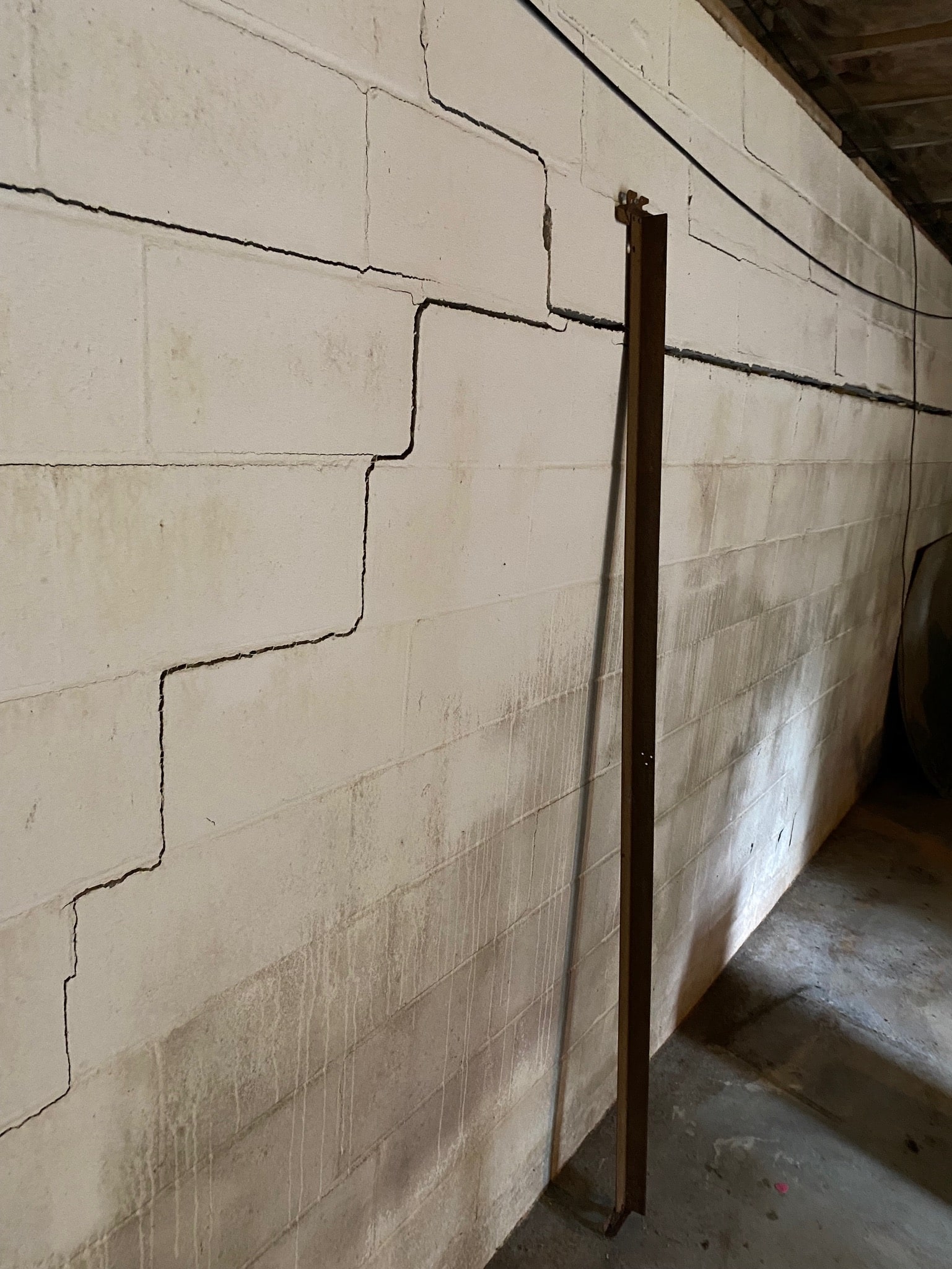
You’ve likely not given much thought to your home’s gutters, have you? Yet, they’re key players in safeguarding your property’s foundation. You see, they channel rainwater away, preventing soil saturation that could exert pressure on your foundation walls, leading to cracks. But what happens if they’re not properly installed, or worse, neglected? And how can you guarantee they’re doing their job effectively? Let’s explore how a simple gutter system plays such a pivotal role in protecting your home’s structural integrity.
Key Takeaways
- Gutters direct water away from the property, preventing soil saturation around the foundation.
- Saturated soil can exert pressure on foundation walls, causing cracks and threatening structural integrity.
- Proper gutter installation ensures correct slope and leak-free drainage, crucial for effective foundation protection.
- Downspout positioning is essential to prevent water pooling near the foundation, reducing damage risks.
- Regularly maintaining gutters, including cleaning and inspecting for damage, is vital for the structural integrity of the foundation.
Understanding the Function of Gutters
Your home’s gutters aren’t just there for decoration; they play an essential role in protecting your property. They control the water flow around your house, directing rainfall away from the foundation, walls, and landscape.
But not all gutters are created equal, and the type you choose can have a significant impact on their effectiveness.
Let’s talk gutter types. K-style and half-round are two common types you’ll encounter. K-style gutters, with their flat backs and bottoms, resemble the letter ‘K’. These are popular due to their superior water flow capabilities and ornamental design.
Half-round gutters, on the other hand, are exactly as they sound – half-round tubes. While they mightn’t handle as much water as K-style, they’re easier to clean, reducing the risk of blockages.
Choosing the right gutter isn’t enough, though. You’ve also got to maintain them. That means regular cleaning and inspection.
Debris can cause blockages, disrupting the water flow. This can lead to overflow, potentially causing damage to your property.
The Connection Between Gutters and Foundations
Foundation health hinges on a well-functioning gutter system. You mightn’t realize it, but the success of your gutter installation plays a major role in keeping your home’s foundation solid and secure. Let’s explore this vital connection.
Gutters serve to channel water away from your home. Without them, rainwater falls directly off the roof, saturating the soil around your house. This mightn’t seem like a big deal, but it’s a serious threat to your foundation.
When the soil becomes overly saturated, it exerts pressure on the foundation walls, causing cracks and weakening the structure over time.
Proper gutter installation guarantees that your drainage systems are correctly sloped and free of leaks, directing water away from your home’s foundation rather than towards it. Additionally, the downspouts need to be positioned correctly to prevent water from pooling near the base of your home.
In essence, a well-maintained gutter system is your first line of defense against foundation damage. It’s not just about keeping your house looking good; it’s about guaranteeing its structural integrity and longevity.
A sturdy, properly installed gutter system is an investment in your home’s future.
Potential Damage From Gutter Neglect
While a well-maintained gutter system can safeguard your home’s foundation, neglecting this essential component can lead to serious ramifications. If you’re not careful, you’ll find water pooling around your home’s foundation. This isn’t just an unsightly puddle; it’s a threat to the very integrity of your home.
When gutters fail to direct water away from your home, it falls straight down, saturating the soil around your foundation. Over time, this leads to soil erosion. As soil erodes, your foundation loses the support it needs, causing structural instability. You might see cracks in your walls or uneven floors as a result.
But it’s not just your home’s structure at risk. Pools of water are prime pest attraction sites. Mosquitoes, for example, love stagnant water to lay their eggs. Other pests, like termites, are attracted to the damp wood, which can lead to an infestation in your home.
Ignoring your gutters might seem like a harmless omission, but it’s a gamble you don’t want to take. The potential damage from gutter neglect isn’t just costly to repair, it’s a risk to your home’s safety and your peace of mind.
Proper Gutter Maintenance
To avoid the costly damage and potential hazards that come with gutter neglect, it’s vital to adopt a regular routine of gutter maintenance. Armed with the right gutter cleaning techniques, you’ll be well on your way to safeguarding your home’s foundation.
Don’t fret; gutter maintenance isn’t as intimidating as it sounds. It’s all about consistency and understanding the best times for a clean-up. Here are some seasonal maintenance tips to guide you.
In the spring, check for winter damage and clear out any debris accumulated during the colder months.
Summer is often the calm before the storm, so take this time to inspect your gutters for cracks, rust, or leaks.
Come autumn, it’s crucial to clean your gutters frequently, as falling leaves can quickly clog them up.
Selecting the Right Gutter System
Choosing a suitable gutter system for your home is just as important as keeping it clean and maintained. You need to take into account various aspects, such as gutter materials and installation techniques, to guarantee that your choice is both effective and durable.
- Gutter Materials: There are various materials available, including aluminum, steel, copper, and vinyl. Each has its pros and cons. Aluminum, for instance, is lightweight and rust-resistant, but it’s not as sturdy as steel.
- Installation Techniques: Professional installers use various techniques, such as seamless installation, which minimizes leaks. DIY installation might save you money, but it’s risky if you’re not familiar with the process.
- Size and Style: The size of your gutters should be proportional to your roof’s size and the amount of rainfall your area receives. The style, such as K-style or half-round, should complement your home’s architecture.
Frequently Asked Questions
What Materials Are Most Durable for Gutter Systems?
When you’re comparing the durability of gutter materials, it’s vital to take into account a few key factors.
Generally, copper and stainless steel gutters are the most durable. They’re resistant to rust and can handle heavy rainfall. However, they’re also more expensive.
Vinyl gutters are less durable but more cost-effective, making them a popular choice for many homeowners.
It’s crucial to weigh durability and cost when choosing your gutter material.
How Often Should I Replace My Gutters?
It’s generally accepted that the lifespan of gutters is around 20 years, depending on the material.
However, you’ll want to inspect them regularly for signs of wear or damage, as issues can arise that require sooner replacement.
You shouldn’t wait until the full 20 years to replace if they’re not functioning properly.
To maintain your home’s integrity, it’s best to consult a professional about the replacement frequency for your specific gutter system.
Can Improperly Installed Gutters Cause Problems?
Absolutely, improperly installed gutters can cause serious problems.
If your gutter installation isn’t correct, it won’t effectively divert water away from your home. Instead of protecting your foundation, it may lead to water pooling around it.
This can cause erosion, structural damage, and even basement flooding.
It’s crucial to guarantee your gutters are properly installed and maintained to avoid these issues.
What Are the Signs of a Failing Gutter System?
You’ll notice a failing gutter system through signs like sagging sections, water leaks or overflow, and peeling paint.
It’s important to regularly check for these common gutter issues.
Don’t forget, maintenance is key. Clean out debris, make sure downspouts are directing water away from your house, and keep an eye out for any damage.
These simple gutter maintenance tips can save you a lot of trouble down the line.
Are There Any Eco-Friendly Gutter Options Available?
Absolutely, there are eco-friendly gutter options available.
You can opt for gutters made from sustainable materials like recycled steel or aluminum. These not only last longer but also reduce landfill waste.
Furthermore, you could consider rainwater harvesting systems. They’re designed to collect and store rainwater from your gutters. This reduces water usage and can provide a secondary water source.
Conclusion
So, you’ve seen how essential gutters are in protecting your home’s foundation. They shield your home from water damage and costly repairs. But remember, they can’t do their job without regular upkeep. By choosing the right gutter system and keeping it well-maintained, you’re doing more than saving money. You’re ensuring the longevity and structural integrity of your home. So, don’t neglect your gutters. They’re a small detail with a big impact.

Seal-tite Basement Waterproofing Co. is a full service basement environment contractor. We carry an A+ Better Business Bureau rating. We repaired over 40,000 homes and structures in Virginia, West Virginia, Tennessee, and North Carolina. We are fully insured and licensed. We have worked in all types of locations, including residential and commercial locations, government agencies, colleges, hospitals, churches, and condo associations.
Seal-tite® offers a lifetime transferable warranty. We carry a Class A Contractor’s License and we are fully insured. Our satisfied customers range from government agencies to businesses, hospitals, colleges, churches, and thousands of homeowners. Your home is probably the single largest investment you will make in your lifetime. Don’t wait, call Seal-tite® to help make your home dry, safe and livable.

